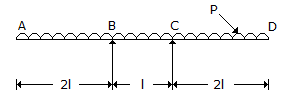Civil Engineering - UPSC Civil Service Exam Questions
Exercise : UPSC Civil Service Exam Questions - Section 26
- UPSC Civil Service Exam Questions - Section 14
- UPSC Civil Service Exam Questions - Section 27
- UPSC Civil Service Exam Questions - Section 26
- UPSC Civil Service Exam Questions - Section 25
- UPSC Civil Service Exam Questions - Section 24
- UPSC Civil Service Exam Questions - Section 23
- UPSC Civil Service Exam Questions - Section 22
- UPSC Civil Service Exam Questions - Section 21
- UPSC Civil Service Exam Questions - Section 20
- UPSC Civil Service Exam Questions - Section 19
- UPSC Civil Service Exam Questions - Section 18
- UPSC Civil Service Exam Questions - Section 17
- UPSC Civil Service Exam Questions - Section 16
- UPSC Civil Service Exam Questions - Section 15
- UPSC Civil Service Exam Questions - Section 1
- UPSC Civil Service Exam Questions - Section 13
- UPSC Civil Service Exam Questions - Section 12
- UPSC Civil Service Exam Questions - Section 11
- UPSC Civil Service Exam Questions - Section 10
- UPSC Civil Service Exam Questions - Section 9
- UPSC Civil Service Exam Questions - Section 8
- UPSC Civil Service Exam Questions - Section 7
- UPSC Civil Service Exam Questions - Section 6
- UPSC Civil Service Exam Questions - Section 5
- UPSC Civil Service Exam Questions - Section 4
- UPSC Civil Service Exam Questions - Section 3
- UPSC Civil Service Exam Questions - Section 2
21.
Which one of the following would contain water with the maximum amount of turbidity ?
22.
The following steps are necessary to obtain sufficient accuracy with the tape :
1. Keeping uniform tension on tape for each measurement:
2. "Breaking" tape on slopes are necessary to keep the tape level.
3. Keeping accurate count of the stations.
4. Keeping the tape on the line being measured.
The correct sequence of these steps is
1. Keeping uniform tension on tape for each measurement:
2. "Breaking" tape on slopes are necessary to keep the tape level.
3. Keeping accurate count of the stations.
4. Keeping the tape on the line being measured.
The correct sequence of these steps is
23.
A bar of length l is uniformly tapering from a diameter d1 at one and to a diameter d2 at the other end. The bar is subjected to an axial tensile loads. What is the total elongation (where E = Young's modulus of elasticity. )
24.
A welded steel plate girder consisting of two flange plates of 350 mm x 16 mm and a web plate of 1000 mm x 6 mm, requires
25.
ABCD is a beam of length 5l which is supported at B and C (having supported length BC = 'l') and having two equal overhangs AB and CD of length 2l each. It carries a u.d.l. of intensity p per unit length throughout the beam as shown in the given figure.
The points of contraflexure will occur

The points of contraflexure will occur

Quick links
Quantitative Aptitude
Verbal (English)
Reasoning
Programming
Interview
Placement Papers


